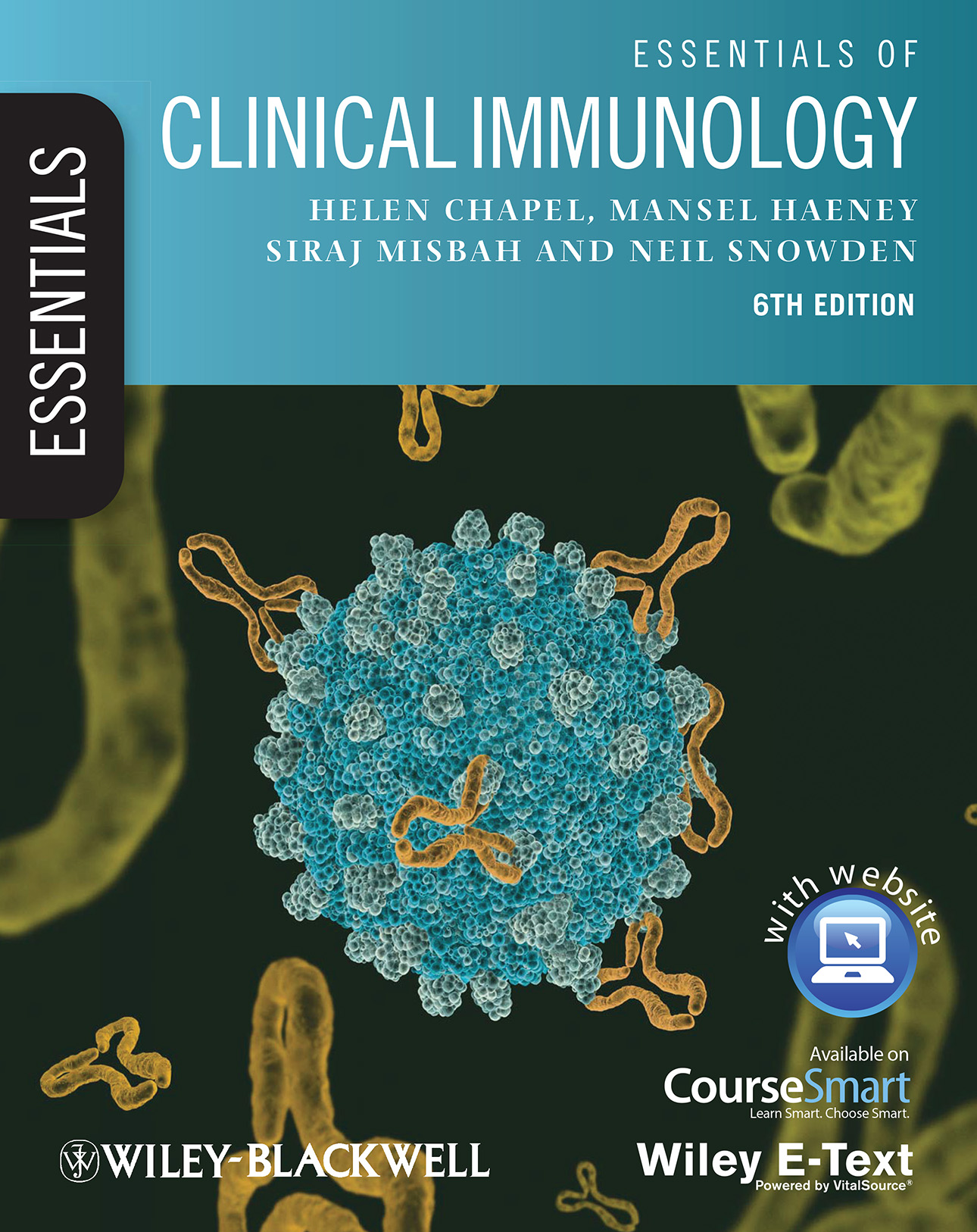Essentials of Clinical Immunology; 6th Edition
Abstract
This is the last edition of the book in this format and the first as a digital edition; some progress since the first edition in 1984. During this time there have been fantastic advances in basic immunology and clinical applications, so that many of the earlier concepts are outmoded, redundant or just wrong. Keeping up to date is an increasingly time consuming and difficult task, not least to keep pruning exciting new findings in basic immunology that do not yet add much to our overall understanding of the important role of the immune system in health and disease.
Since the fifth edition in 2006, Mansel Haeney has finally retired completely and sadly could not be persuaded that his help would be invaluable (it would have been); I have missed the laughter generated over many years about ‘pompous text’ and ‘over-researched detail’. In addition, Neil Snowden has moved to full-time rheumatology and clinical administration and was not able to take part and Siraj Misbah has become Clinical Lead in Immunology and is active on any number of national and international committees.
So that left only one of the four, who is therefore responsible for all the mistakes in this edition. Blackwell Scientific – now Wiley-Blackwell – were very persuasive and hence assistance was found in the form of Tom Hills, a Rhodes scholar from New Zealand, formerly an MSc student on the Integrated Immunology course in Oxford and currently a DPhil student. Tom has read and updated all the clinical chapters with me, as well as providing enthusiasm and encouragement to complete the task. I am indebted to him.
I am also grateful to Vojtech Thon, Associate Professor in Brno, who has not only translated this edition into the Czech language but checked the English version as he went along; a mammoth task that he has undertaken with great determination and precision. My grateful thanks to him too.
This edition includes a rewrite of Chapter 1 since there is so much new information about Basic Immunology compared with only 6 years ago. The chapter on Pregnancy has been revised to include associated immunological diseases only, since the basic immunology of pregnancy is an area of specialised interest rather than mainstream Clinical Immunology. For the same reason, I have resisted adding a whole chapter on Tumour Immunology (though this can be found in the French edition for those who are really keen!), settling instead to expand the chapter on Immune Manipulation. For students who may read older texts, I have left in comments on some of the now outdated tests or therapies and, where I can, have provided explanations as to why they have been superseded, so that students are not misled. The biggest change in the clinical sections relates to the genetic insights provided by the many genome-wide association studies (GWAS) now undertaken for most immunological diseases. These studies have provided both new understanding and many ‘red herrings’. The rapid growth in primary immunodeficiencies and the discovery of the many new genes in various complex conditions have shown that many of the genes mutated in primary immunodeficiencies are multifunctional; furthermore, some are involved in several important/central pathways whilst others are redundant. It has been difficult to choose those that are important to students of Clinical Immunology and I have included only a small selection of examples.
As before, the bold type in the text indicates the content of each paragraph; really important points are identified by italics. Since several student reviews, while generous in their comments, requested more MCQs for each section, these are on the website, with answers as before: www.immunologyclinic.com.
My thanks for help with particular chapters go to Beth Psaila (also my daughter-in-law), who rewrote much of the lymphoproliferation chapter, Georg Hollander, who kept me straight on autoimmunity and tolerance as well as new basic concepts, Meilyn Hew for reading the practical chapter and Siraj Misbah for making sure that my rheumatology was up to date.
This edition would not have happened without Martin Davies at Wiley-Blackwell, who talked me into it, and Karen Moore, who edited the final revised version. I thank them for their persistence and help in achieving a final edition.
Finally, I thank my family once again – and, I promise, for the last time. They have been most longsuffering, allowing ‘the seeming endless intrusion of Clinical Immunology into their lives’ – as Mansel wrote for the first edition in 1984.


